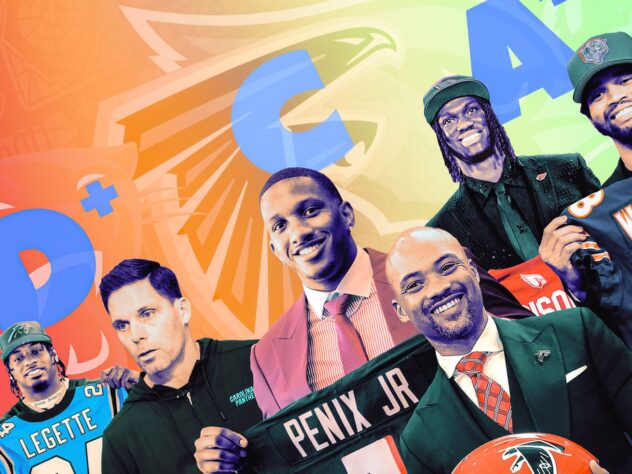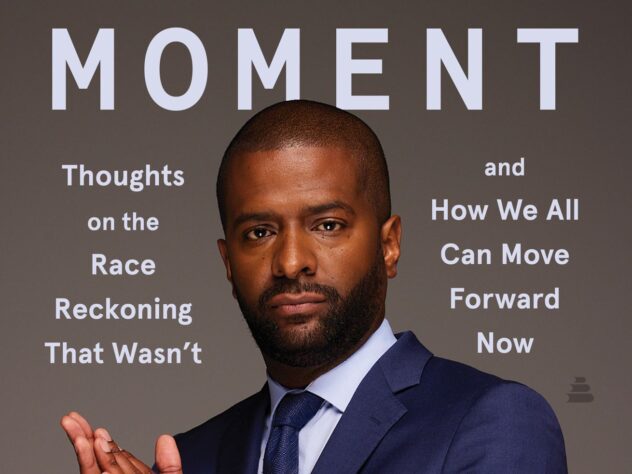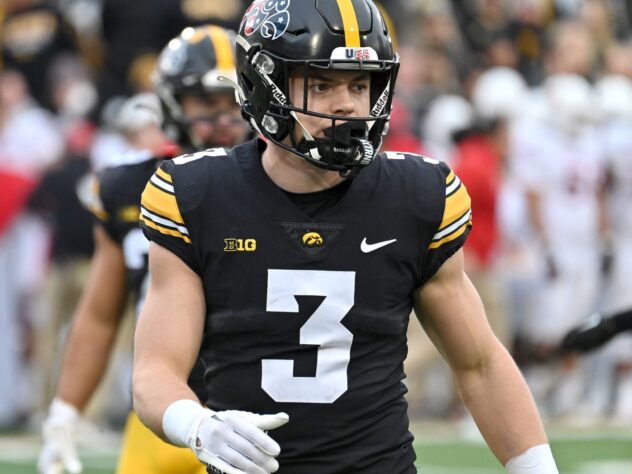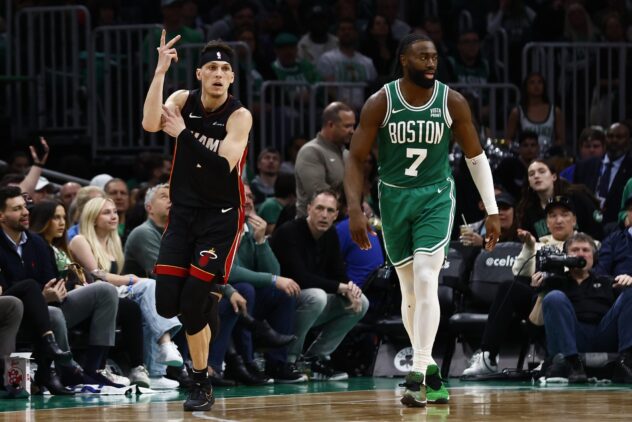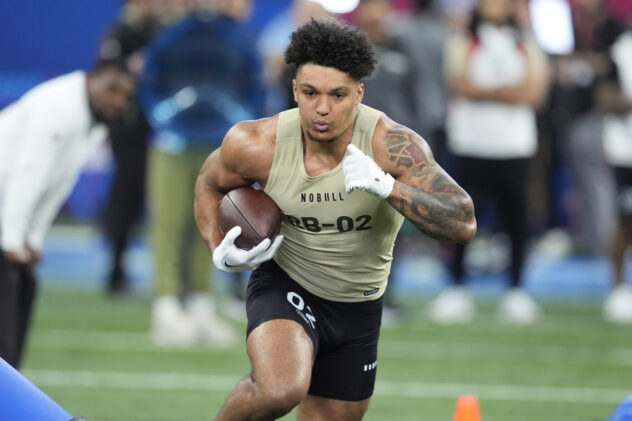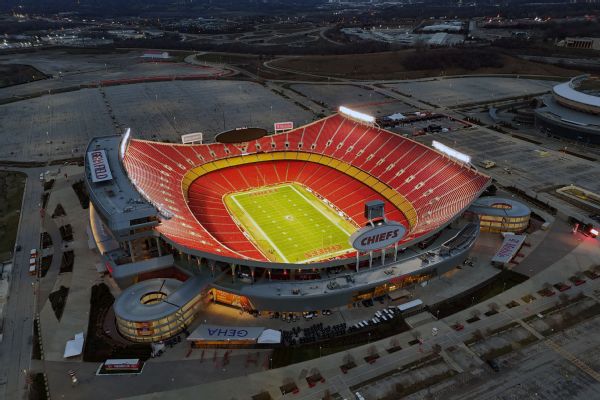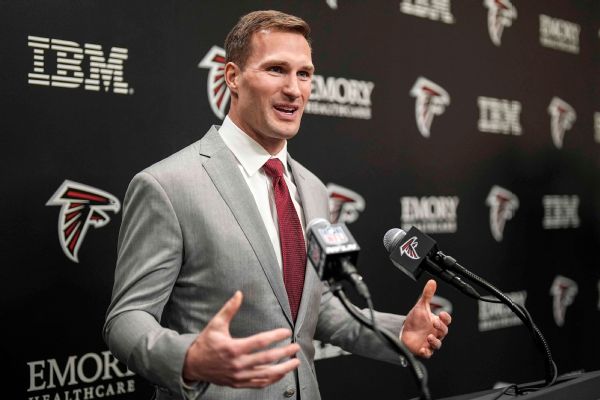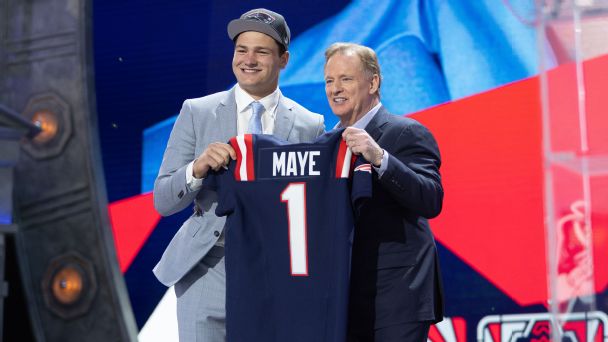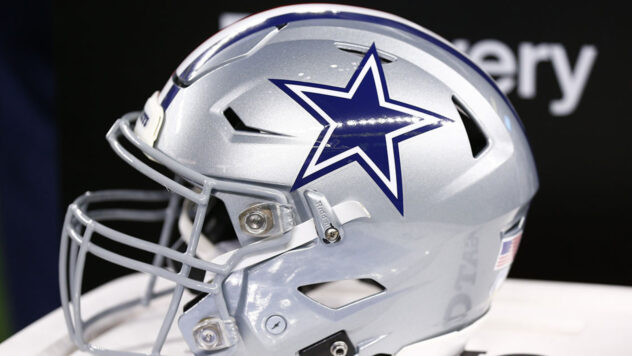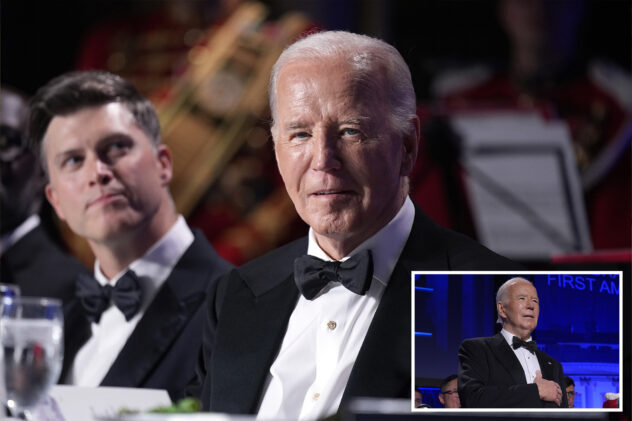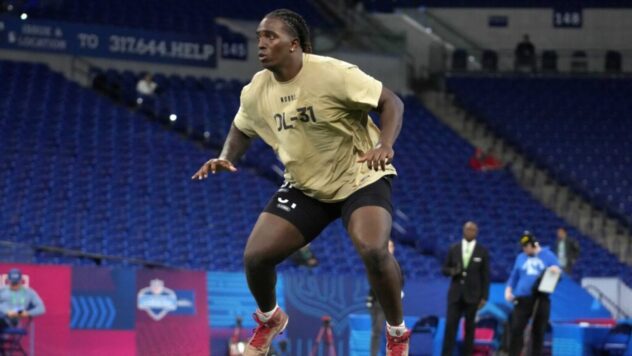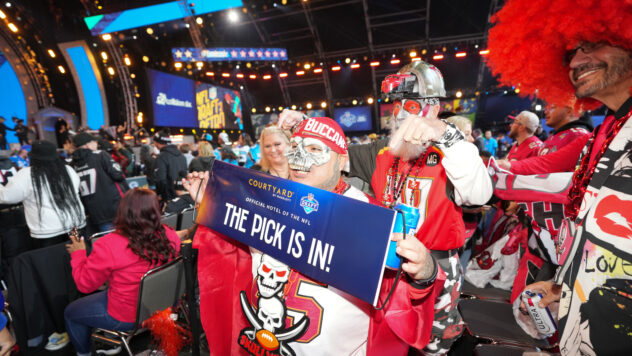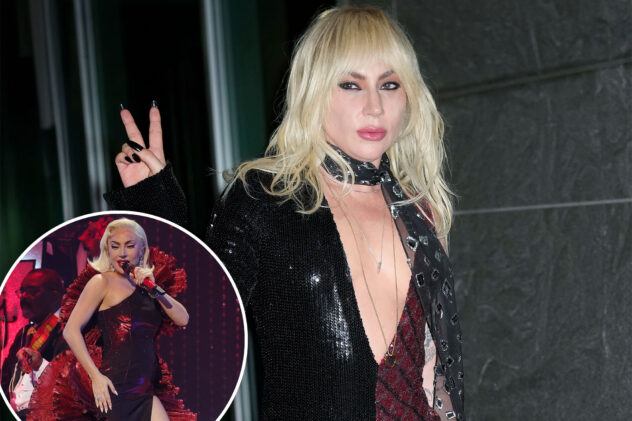The Baffling Conclusion to the Justin Fields Trade Saga
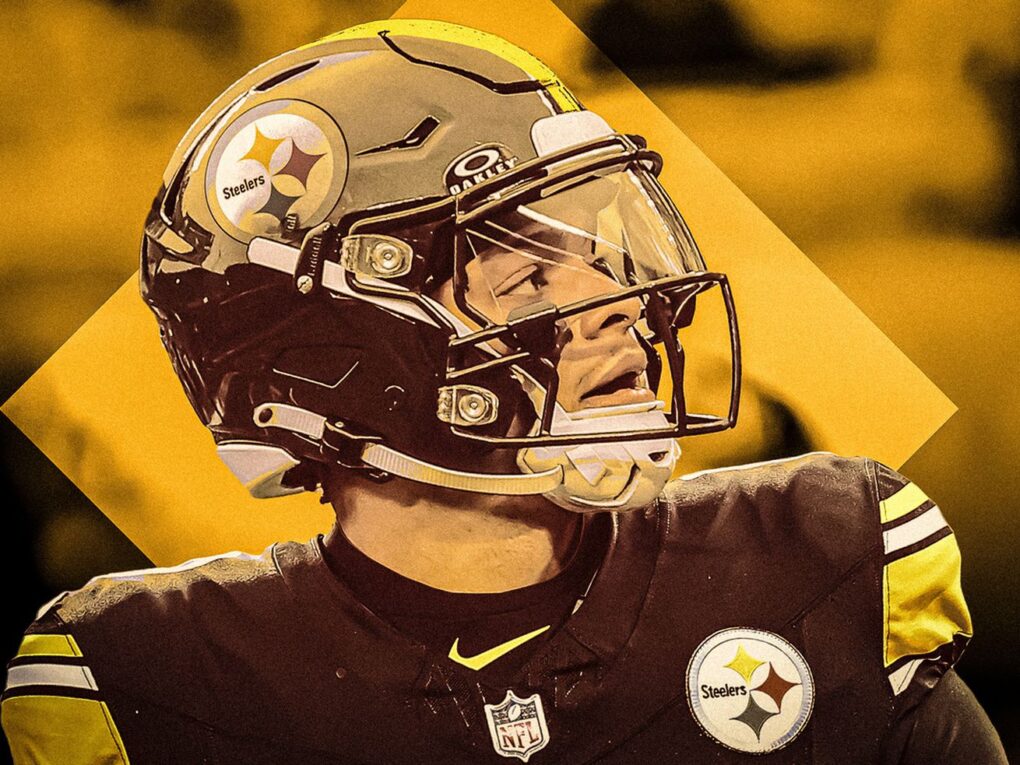
The Bears traded Fields to the Steelers, and one of the central questions of the 2024 NFL offseason has finally been answered. But this move raises other questions, namely: Why couldn’t Chicago get more for Fields than this?
Two months ago, toward the end of the regular season, I wrote a piece about the Bears’ upcoming franchise-defining moment. At the time, they had just secured the first pick in the 2024 NFL draft and, with it, the chance to select a truly elite quarterback prospect—USC’s Caleb Williams—and set their team on the fast track for competitive relevance. Yes, incumbent Chicago quarterback Justin Fields was still on the roster; and yes, Fields had shown flashes of his upside down the stretch. But the Bears’ decision seemed obvious: trade Fields and draft the quarterback who has elicited comparisons to a young Patrick Mahomes.
What could Chicago get for Fields? Here’s what I theorized in January: “After Sam Darnold netted second-, fourth-, and sixth-round selections when he went from the Jets to the Panthers, it is reasonable that Fields—who has been better than Darnold at every turn of their respective careers—would net at least that.”
Well, on Saturday, Fields was traded to the Pittsburgh Steelers. In return, the Bears got a sixth-round pick—not even in this year’s draft, but in next year’s draft. The pick could reportedly turn into a fourth-rounder depending on Fields’s playing time.
Bears are trading Justin Fields for a 2025 6th-round pick that goes to a 4th-round pick based on playtime, per sources. pic.twitter.com/E7JY7K60Wn
— Adam Schefter (@AdamSchefter) March 16, 2024
On its face, this deal seems like a colossal disappointment for Chicago. The fact that Fields returned so little isn’t just perplexing to me—it is far off from the expectations set by reporting over the past few months. In January, ESPN’s Jeremy Fowler wrote, “The consensus in an informal poll of league evaluators is that Fields would be worth a second- or third-round pick in a pre-draft trade.” In February, ESPN’s Adam Schefter said, “I think they might get a 1.” At the NFL draft combine in Indianapolis, The Athletic’s Jeff Howe polled eight league coaches and executives and got the same result as Fowler: Fields would likely go for a second- or third-round pick.
So what explains the sudden and steep depreciation of Fields’s market value? And how did we land in a place where Fields commanded less in a trade than quarterbacks like Desmond Ridder and Kenny Pickett? Let’s unpack the factors that led to this surprising outcome.
The first factor is Bears general manager Ryan Poles’s misplaying of his hand. We don’t know the price that Poles was seeking in a Fields trade, but we do know that Poles had several trade talks leading up to free agency. There was plenty of time for him to negotiate an acceptable package long before Kirk Cousins agreed to terms with the Falcons, or Baker Mayfield re-signed with the Buccaneers, or Russell Wilson was cut by the Broncos and then signed with the Steelers. Of course, a trade couldn’t be officially executed until the new league year began on March 14, but Poles had to know his target price and the offers he was getting from other teams. He still elected to enter the free agent frenzy without a trade partner in place.
This wasn’t a bad decision, per se, but it was a risky one. Poles’s hope had to be that a team with a quarterback need would miss out on an appealing option in free agency and increase its trade offer for Fields out of desperation. But Poles underestimated just how many quarterbacks there were to go around—and how much other front offices valued those quarterbacks relative to Fields.
After Cousins, Mayfield, and Wilson found their respective landing spots, the Raiders seemed to be a prime trade candidate for Chicago. Las Vegas reportedly had an interest in Fields but signed Gardner Minshew to a bridge quarterback contract instead. The Eagles also called about Fields, per reports; it didn’t amount to anything, and Philadelphia later traded for Pickett. The Seahawks traded a series of pick swaps in exchange for 2023 Commanders starter Sam Howell. And the Cardinals brought in Ridder by sending wide receiver Rondale Moore to the Falcons.
Including the trade of Mac Jones, whom the Patriots dealt to the Jaguars for a 2024 sixth-round pick, four quarterbacks under age 26 were traded before Fields. All four were acquired as backups. All four went for a better price than the sixth-rounder that Fields fetched (though the conditions attached to the pick could ameliorate that return). You don’t usually see this many quarterback trades in such close succession—and certainly not for players at similar stages in their careers. If Poles knew that this movement was coming, perhaps he would have never let the market for Fields linger and risked being impacted by the prices set by other general managers.
But Poles’s decision-making is only part of the equation. The second factor in how this all played out is that other teams didn’t see Fields as a clear upgrade over the other options in a saturated market. As ESPN’s Dan Graziano reported just before the legal tampering period opened, “Right now, the message the Bears are getting back from teams is that they don’t consider Fields more of a sure thing than other potential one-year options such as Sam Darnold or Drew Lock, who wouldn’t come with the fifth-year option decision that Fields’s eventual team will have to make by early May. It’s an odd offseason in which the supply at the quarterback position seems to be higher relative to the demand than usual, which works in favor of the teams who are looking for quarterbacks and likely drives the price down in these kinds of trade talks.”
There were so many other players that franchises could talk themselves into—from the young passers mentioned above, to bridge quarterbacks like Minshew and Jacoby Brissett, to veteran backups like Marcus Mariota and Jameis Winston—that the market for Fields dried up as Poles appeared to hold firm on his asking price. In fact, Fields only went to the Steelers after Pickett, frustrated with the organization’s recent acquisition of Wilson, asked out of Pittsburgh.
In the context of this leaguewide evaluation, Poles’s reluctance to trade Fields is understandable. Graziano’s report that teams viewed Fields as no more valuable than Darnold or Lock is shocking. Darnold was given five straight years of starting opportunities with the Jets and then the Panthers; he couldn’t deliver and never improved. Lock was also given two desirable opportunities: first in Denver, where he lost the starting job to Teddy Bridgewater, and then in Seattle, where he failed to beat out Geno Smith in camp. Both have been afforded the second chance that so many teams were unwilling to give Fields.
If we look at total passing expected points added, we see that Fields is better now than Darnold was at the same point in his career, as well as at this exact moment in time. Lock, who has far less experience, is about where Fields was at that time in his career—but remember, he’s already had two cracks at a starting job, and he may get a third this summer in a Giants camp competition with Daniel Jones.
/cdn.vox-cdn.com/uploads/chorus_asset/file/25340811/image1.png)
The league’s estimation of Fields is particularly confusing given just how obviously mismanaged the Bears have been throughout his tenure. It should be easy to see how poorly the franchise developed Fields and accordingly infer that there is some untapped potential in his game. Let’s revisit Fields’s timeline in Chicago for reference.
Fields’s first NFL start came in Week 3 of the 2021 season after bridge quarterback Andy Dalton went down with an injury. The Bears posted 1.1 yards per play—the lowest single-game number since 2004—in impossibly frustrating fashion: by running nothing that Fields was good at and running everything that he was bad at. Then–head coach Matt Nagy set Fields up to fail and stayed the course all season. Unsurprisingly, Nagy was fired the following January.
Fields’s rookie season was not just marred by poor coaching, but also an untenable supporting cast. Darnell Mooney and Allen Robinson were his top receivers; Jason Peters, Germain Ifedi, and Larry Borom were his tackle rotation; Sam Mustipher was his starting center. The roster simply wasn’t good enough to win games.
So, entering 2022, the Bears brought in Poles as their new GM and tried to markedly improve the roster around Fields. This effort failed. Tight end Cole Kmet led the team in targets; Mooney, Dante Pettis, and Equanimeous St. Brown were the leading target-getters at receiver after rookie third-round pick Velus Jones Jr. failed to earn snaps and trade deadline acquisition Chase Claypool flopped too. Riley Reiff and Teven Jenkins were acquired to fix the offensive line, and it turns out that fifth-round rookie Braxton Jones provided the only significant upgrade.
But while Fields’s supporting cast hardly improved, his play-calling did. In the back half of 2022, first-year Chicago offensive coordinator Luke Getsy started to really use Fields’s legs. The Bears called more designed QB runs and dialed up more dropbacks rolled out of the pocket. The offense soared. Chicago scored at least 24 points in five straight games. The team was finally running the stuff that made sense for Fields.
This could have been the lightbulb moment, the point that Fields turned the corner. But the Bears squandered that too. Although Chicago added star wide receiver DJ Moore during the subsequent offseason, Getsy and head coach Matt Eberflus lost command of the offense and put forth an embarrassing unit to start the 2023 season. There were technical issues, missed routes, and procedural errors. The answer to what was wrong with the 2023 Bears offense was … well, everything.
Eventually, the Bears made adjustments and righted the ship. They cast Claypool away, devised more targets for Moore, and refocused on Fields’s mobility (though not as much as they had during his run to end 2022). And Fields’s late-season improvement was evident—this time not in peak plays, but in the negative plays that he eliminated.
Over the course of his career, Fields has been a prolific sack taker. He led the league in sack rate in both his rookie and sophomore seasons. Last season was the first in which he didn’t lead the NFL in sack rate (he was third worst). But he ended 2023 with the best sack avoidance of his career. His pressure-to-sack ratio was at a career low; his scramble rate was at a career low. Fields was starting to play more reliably within the scope of the offense, cutting away the sacks that had long handicapped his offenses.
/cdn.vox-cdn.com/uploads/chorus_asset/file/25340812/image2.png)
The narrative here is extremely easy to sculpt. In Fields’s rookie season, when he was thrust into action earlier than intended, he played in a scheme catered to his weaknesses and alongside a terrible supporting cast. It took the replacement coaching staff two seasons to put a real offense around him—one with an actual no. 1 receiver and a decent offensive line—and the Bears still never built the offense in a way that maximized his rushing ability. The Bears started his career by failing him and did marginally better in the years since. They pretty much failed him the whole way through.
Fields has very real flaws as a quarterback, to be certain. He has ignored open receivers, invited pressure, and compounded his mistakes with poor ball security. Coverage of his career to this point, including ours, has noted that time and again. But the skill set that made Fields worthy of the no. 11 draft pick in 2021 remains intact: that cannon for an arm, that scorching speed, that big and dynamic frame. Fields has had impressive stretches when he’s had a decent infrastructure around him—and most teams have a much better infrastructure than the Bears have had over the past few years.
Yet Fields still was traded for a sixth-round pick. In August, the Cowboys sent a fourth-round pick to the 49ers for failed first-rounder Trey Lance. The Bucs signed Baker Mayfield off the scrap heap after he failed to rejuvenate his career with the Panthers and showed how a good team can effectively build around a quarterback that a bad team failed. But Poles couldn’t find a suitor willing to give up more than pennies to offer Fields that chance.
Let’s return to Graziano’s reporting. He cites Fields’s contract as part of the reason why his value depreciated. This is a load of baloney. Fields is due $3.2 million this season from the Steelers, with his fifth-year option looming. That option costs $25.6 million, and Pittsburgh must decide by May 2 if it wants to pick that up. As of now, Fields is a one-year, $3.2 million player.
For perspective: The Vikings gave Darnold $10 million for one season. The Giants gave Lock $5 million. The Patriots gave Brissett $8 million to serve as their bridge quarterback, as they’ll likely also draft another passer in April. The Commanders give Marcus Mariota $6 million (and potentially up to $10 million) on a one-year deal to hold the seat for a drafted rookie.
Sure, none of these quarterbacks cost their teams any draft picks in a trade. But given their recent levels of play, I would unequivocally prefer Fields for $3.2 million over any of those players at their current price tags plus an extra late-round draft pick.
Two things can be true here. Poles and the Bears should have gotten more for Fields. Perhaps they could have held on to him until draft night, waiting to see if a team like the Broncos or Vikings failed to secure a young quarterback, and then cashed in on a sudden spike in Fields’s value. (Josh Rosen, who was coming off a catastrophic rookie season, was traded from Arizona to Miami for a second-round pick on day two of the 2019 draft, hours after the Cardinals took Kyler Murray with the first pick.) But Poles wanted to get Fields’s situation squared away. I respect and understand that.
“I wanna do right by Justin as well.”#DaBears #NFL #NFLDraft pic.twitter.com/AjBFtNV6XC
— SportsGridTV (@SportsGridTV) February 27, 2024
But just as much as the Bears should have gotten more for Fields, the league should have been willing to give up more to get him. Fields is not like Ridder, Pickett, Jones, and Howell. He is far more talented than those players—and anyone insisting otherwise needs to just watch 10 minutes of Fields highlights. They don’t pop guys this big and fast with this type of arm out of a factory. This is a player you want on your team. And a number of franchises missed a chance to easily make their rosters better.
Of all the teams to call the Bears, the Steelers finally got a deal done. Good for them, and good for Fields. While Pittsburgh reportedly has already named Wilson the starter (at least internally), Fields lands in a nice spot. He will not attempt to unseat an established starter or early-round draft pick; rather, he’ll seek to supplant a shaky veteran on a minimum deal. Offensive coordinator Arthur Smith has used designed quarterback runs and rollouts in his past offenses plenty. Instead of settling for one dart throw at the quarterback position, the Steelers now have two, and thus have doubled their chances of finding the player who can unlock their offense.
Will Fields get a legitimate shot at the starting job? How much was Chicago really holding him back? Will lessened expectations elicit improved play? The question of where Fields will go has finally been answered—but, both in looking backward and looking forward, many more remain.

